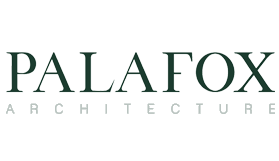By Architect-Urban Planner Felino A. Palafox, Jr.
It has been an old anecdote that “Henry Ford created the modern industrial production line,” which was a precept of Adam Smith’s highly-efficient labor design in his book The Wealth of Nations. Ford adopted Smith’s design for producing cheaper paper clips and translated it to cheaper and faster production of automobiles, hence the T-Ford model. Ford also ushered the world toward the automobile era with a simple concept in mind: the design of work stations affect the way people behave. Sometimes simple changes can create drastic effects. With inspiration from Smith’s book written in 1776, Ford’s production line model of 1901 is still being adopted today.
But this revolution in industrial design became a concern for modern business owners; repetitive action may kill innovation and creative thinking. Since the early 1980’s many businesses started to rise and competition has become fiercer. Gone were the days where there was a monopoly of products, especially with the invention of the World Wide Web. Business owners face the question: how should offices be designed?
In an architect’s perspective, there is no single design to rule them all. It is always dependent on the goals and objectives of the company. If the objective is still mass production, a 1901-inspired production line model may still be effective. Goals, vision, and mission must be clear and should be incorporated in the design.
In the early millennium, a few of the most known example of creative and innovative offices are the Googleplex and Facebook. Their flexible office designs encourage people to work at ease but also inspire efficiency. Brightly colored walls and ceilings, wide windows that give a view of nature, lighting that vary depending on moods, sleeping pods, recreation areas, and brainstorming stations are just a few of the features of these out-of-the-box offices. Other offices have also tested the idea of no rules, just results. However, many offices, such as in the creative industry have observed that it is difficult to exactly imitate systems that work for others. It may not always yield the expected results, most especially if the measuring device for results is not clearly laid out yet.
To hit the ground running on the first work week of 2016, let us explore ideas on how the office environment can be designed for better productivity and stimulate creativity. Here are some solutions that business owners could consider, as well as themes that can be explored with careful study:
1. Lay out the goals and objectives of the company. Design is always inspired from the conditions of its environment, and environment extends to context and purpose. If the office is meant for research and development, the concept of mass production line may not work. The condition that you want to build is something that can inspire creative thinking and good team collaboration.
2. How results should be measured. In a mass production line, it is often measured by lowest cost, highest quality, and fastest assembly. But for corporate offices that demand critical thinking and strict attention to details, it may not work when the finance office is designed for high walking movement. It might become a distraction, especially if many files are confidential. In this context, a more private cubicle design or see-through, closed plan offices is preferred.
3.Collaborative vs. Team-Centric design. Collaborative design encourages people to interact during the whole production process. Desks are placed together, and some modern offices opted for a long open table where people can sit anywhere. Some offices have a single room with a wide white board and open work stations, where workers can brainstorm together. A team-centric approach is also collaborative, but people are broken down into respective teams. Specific teams are grouped together and they meet with other teams in common collaborative spaces.
4. Color schemes and lighting fixtures. Color affects the mood of people and it cannot be taken for granted. Usually, color is used to dictate how people should feel while they work. The Starbucks office is designed like a coffee house, with rustic wood finish interior and warm lighting. For mass production lines, bright hues and white light is said to increase alertness.
5. Vertical vs. horizontal design. The office should be clear on how its hierarchy works. A horizontal design may mean that workers have a closer relationship with their bosses, since they are near and are open for conversation. It creates a mood that employees are equally respected. A vertical design creates an impression of processes, that there is designated circulation of procedures. Usually, a vertical design is made for big corporations that have complex and diversified processes.
The office is like a second home to many employees and business owners. That is why a good office also takes into consideration human health. Indoor Environmental Quality (IEQ)encompasses air quality, acoustics, lighting, temperature, and other aspects inside of a building that could affect a person’s well-being.The people or the end-users are always considered first followed by Planet Earth or environment and prosperity or economy, which sums up our Triple P or E bottom line at Palafox Associates and Palafox Architecture Group. The late Steve Jobs also emphasized the need to design the work space for the people. He said, “The people who are doing the work are the moving force behind Macintosh. My job is to create a space for them, to clear out the rest of the organization and keep it at bay.”
References:
Smith, Adam. Wealth of Nations, edited by C.J. Bullock. Vol. X. The Harvard Classics. New York: P.F. Collier & Son, 1909-14; Bartleby.com, 2001.
Levitt, Theodore. Marketing Myopia. Harvard Business Review. July-August 2014.
McCraw, T.K. (2007). Prophet of innovation: Joseph Schumpeter and creative destruction. Cambridge, Mass: Belknap Press of Harvard University Press.
Myerson, Jeremy, and Philip Ross. The Creative Office. Corte Madera, CA: Gingko, 2002.Print.

